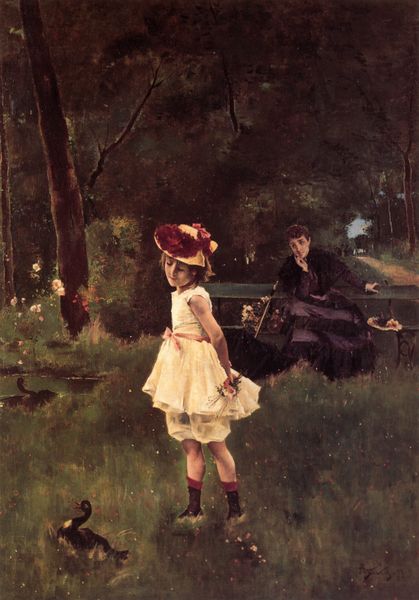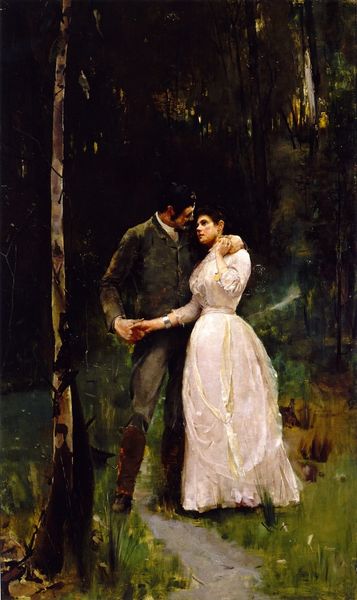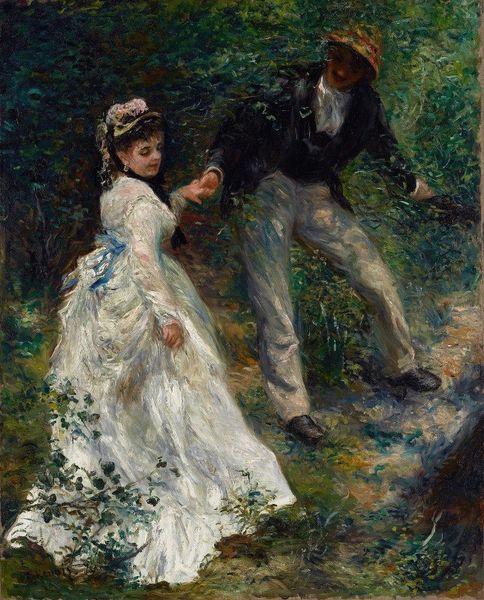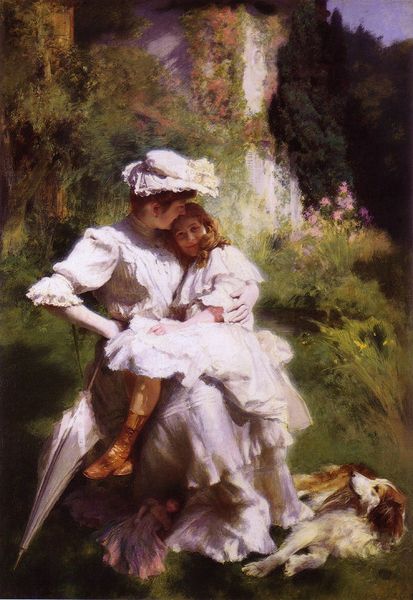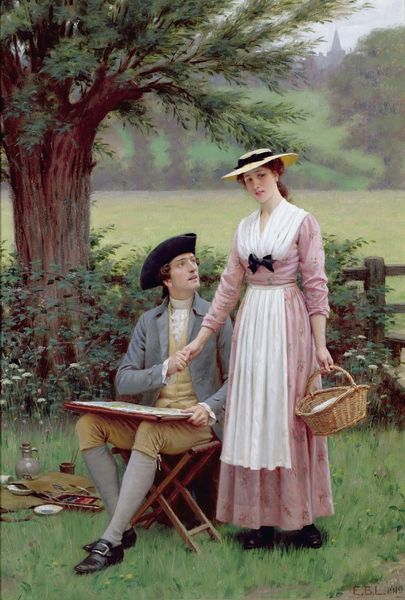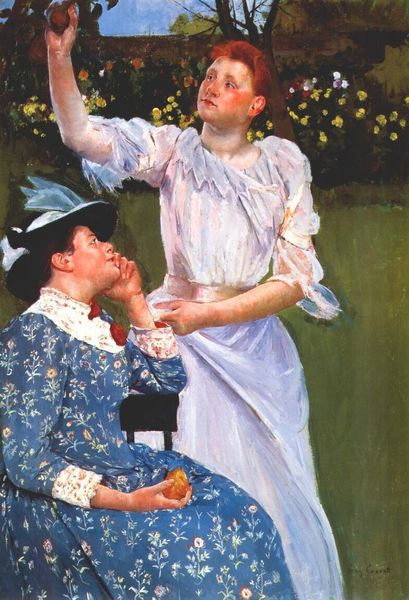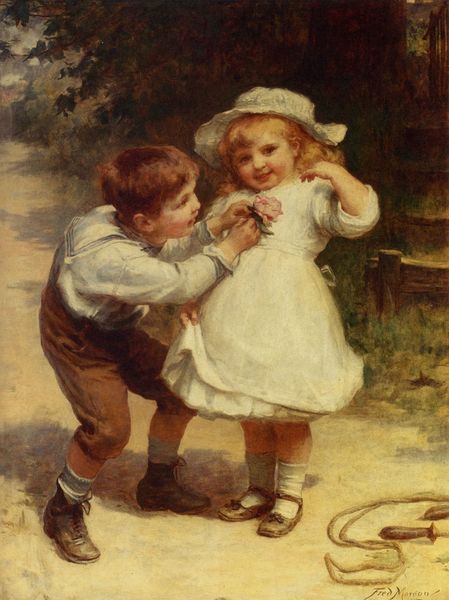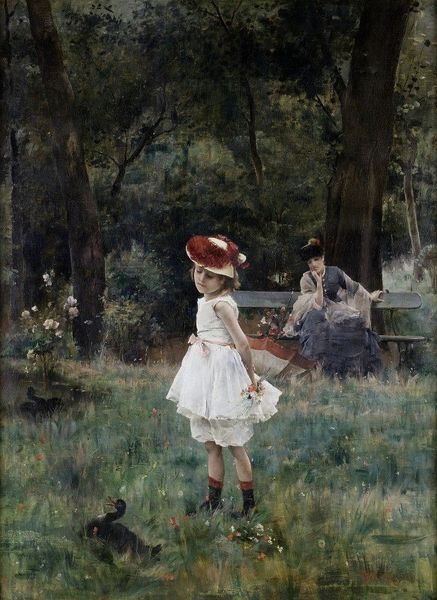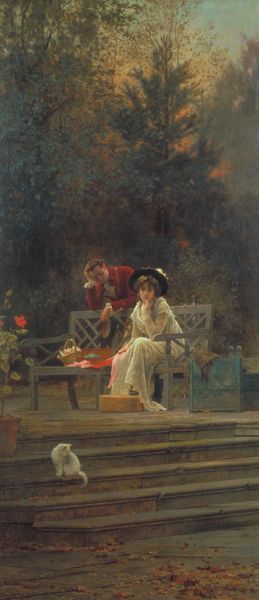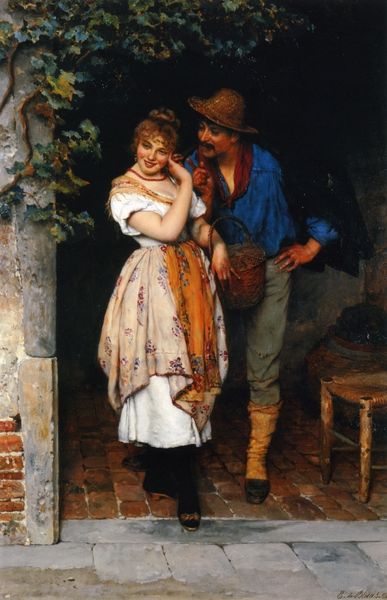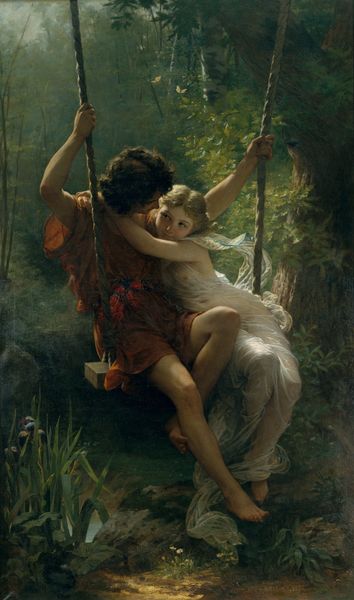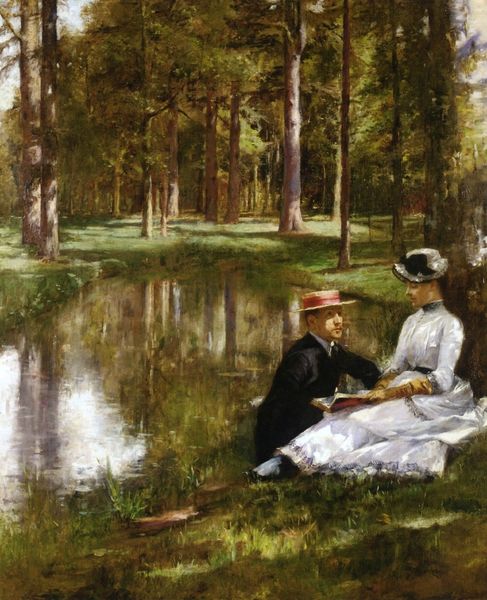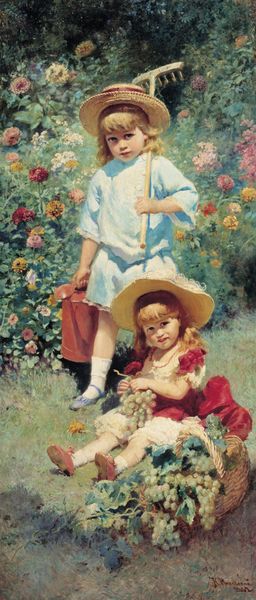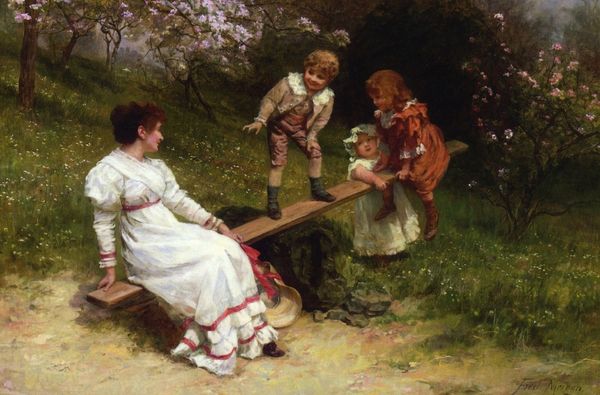
oil-paint
#
portrait
#
gouache
#
oil-paint
#
oil painting
#
romanticism
#
genre-painting
Copyright: Public Domain: Artvee
Curator: Before us, we have Carl Larsson’s oil painting, "Idyll." It certainly encapsulates a very particular, and potentially, outdated perspective of leisure. Editor: My first impression is one of serene tranquility, but also of social imbalance. The way light filters through the trees is exquisite, creating an idyllic atmosphere that almost masks the stark class divisions apparent. Curator: Indeed. We see a couple perched precariously, yet elegantly, on the branch of a tree. Her pristine white dress, his jaunty striped shirt... There's a deliberate construction of class differences here. Editor: The woman's attire is incredibly impractical for such an outdoor setting. It speaks volumes about the constraints placed upon women, particularly upper-class women, even in leisure. She's literally elevated above the natural world, untouchable, while the man's outfit feels more functional. The difference tells us a great deal about the differing roles assigned to each gender in that era. Curator: Larsson, known for his idyllic depictions of Swedish family life, presents us here with an image that seemingly celebrates a carefree moment. Yet, there's a subtle tension. Look at the woman's gaze. Is she really at ease? Editor: Exactly. There's an underlying sense of constraint in her posture, a slight unease that contradicts the supposed "idyll." Perhaps Larsson unconsciously, or perhaps consciously, acknowledged the restrictions placed on women, even within these staged scenes of leisure and romance. It could also represent a narrative about bourgeois relations to nature and who belongs or is "naturally" allowed into these locations. Curator: It prompts us to think about the role of artists in shaping our perceptions of society. Is Larsson simply reflecting the norms of his time, or is he subtly critiquing them? The question hovers in my mind. Editor: It also speaks to the broader romanticism, presenting idyllic narratives that serve particular social and political purposes, not necessarily aligning with historical reality or a balanced perspective. It's a poignant reminder that what we see in art is never a neutral reflection. I like to always consider "Who gets to define beauty, and for whom?". Curator: Thank you for that. The work encourages us to delve deeper into the politics of imagery and challenge traditional interpretations. Editor: Indeed. By exploring its socio-political subtexts, we gain new perspectives and can actively engage with its complexities, contributing to its continued relevance in contemporary discourse.
Comments
No comments
Be the first to comment and join the conversation on the ultimate creative platform.
